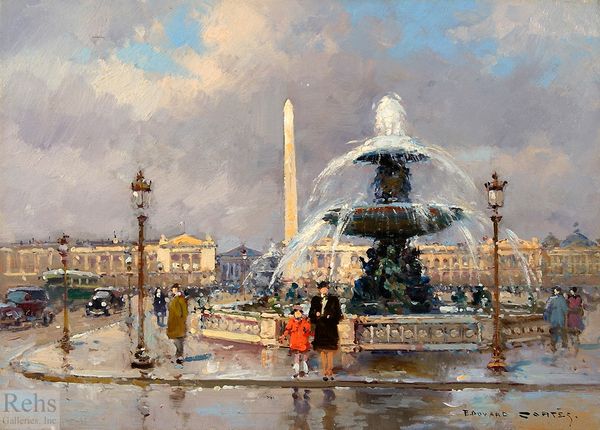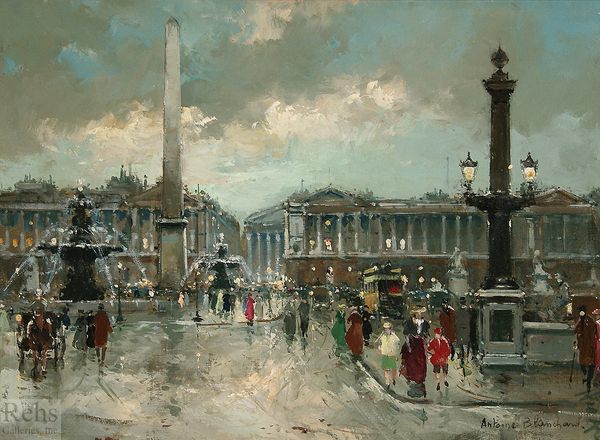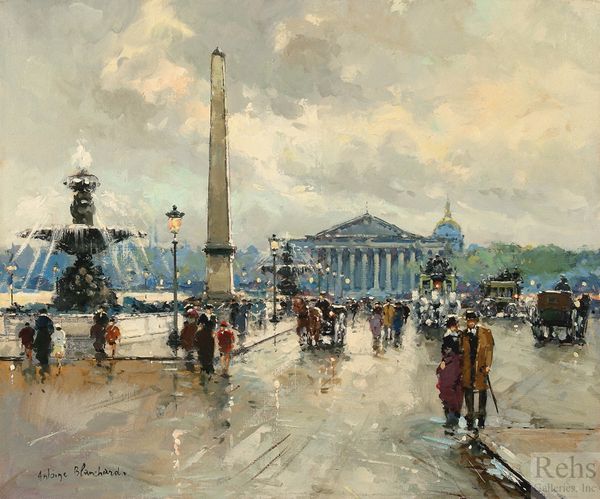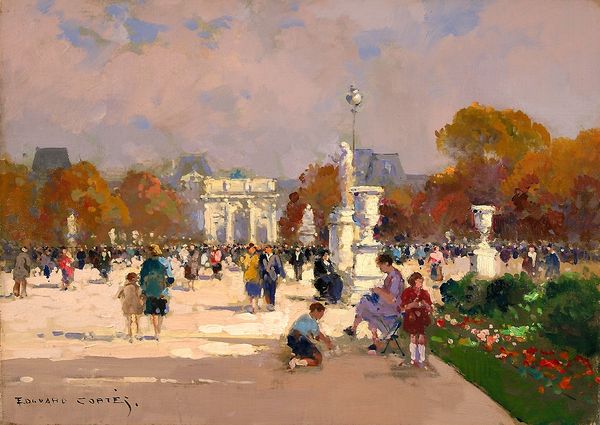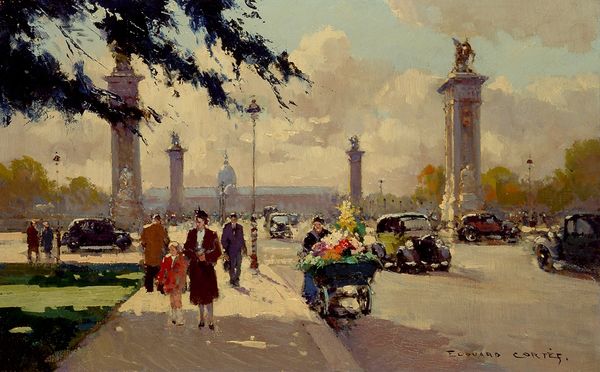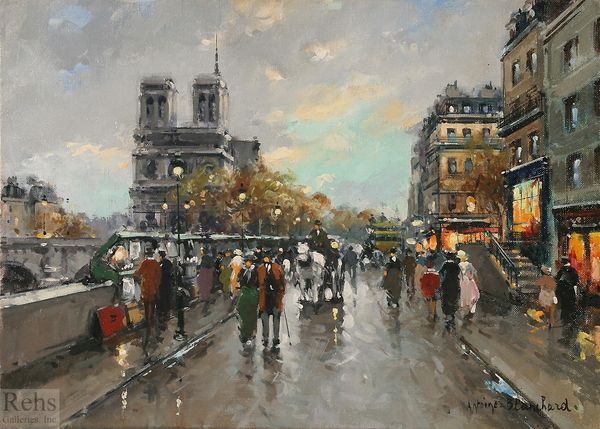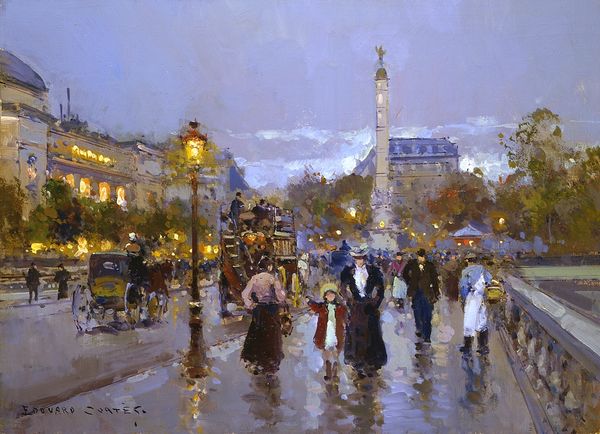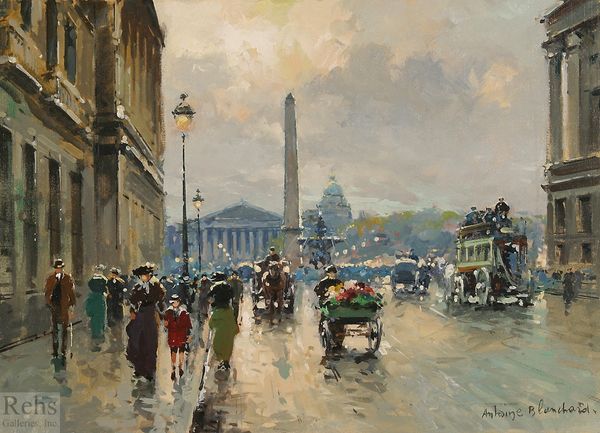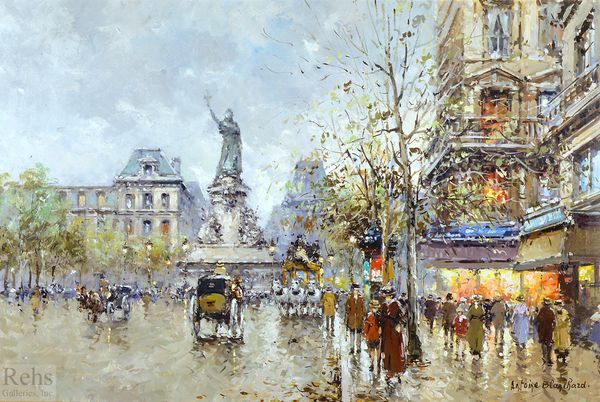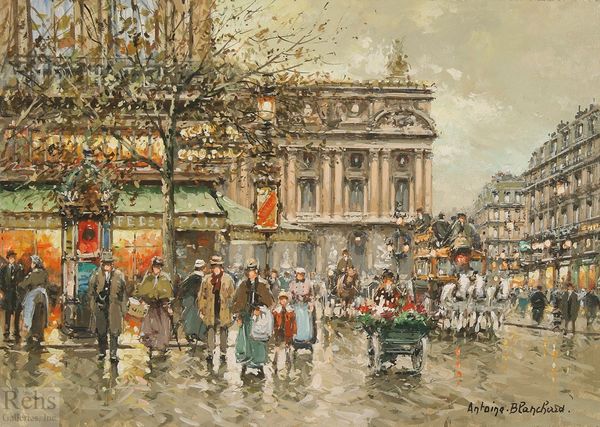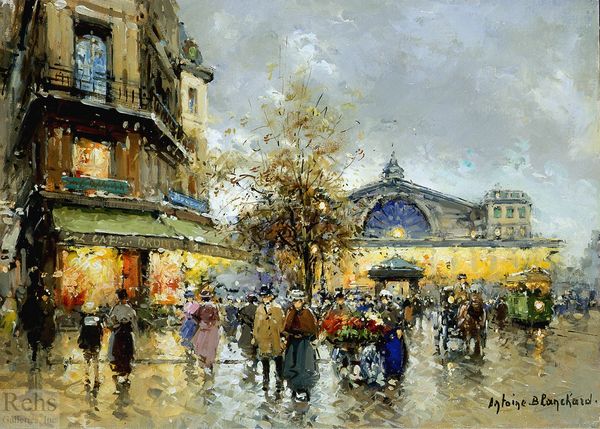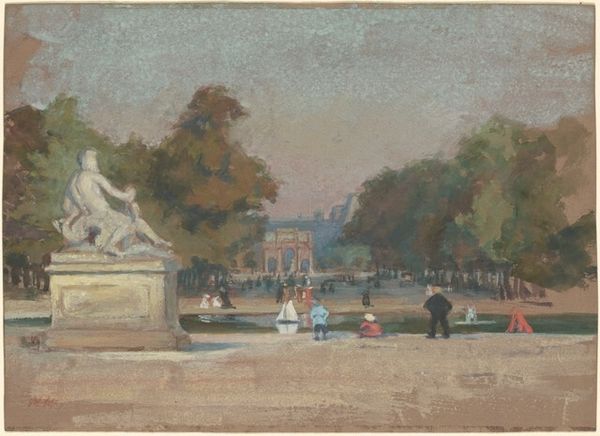
painting, plein-air, oil-paint
#
baroque
#
painting
#
impressionism
#
impressionist painting style
#
plein-air
#
oil-paint
#
landscape
#
oil painting
#
cityscape
#
genre-painting
#
street
#
building
Copyright: Edouard Cortes,Fair Use
Curator: Edouard Cortes's rendering, possibly from the early 20th century, captures "Fountain on Place de la Concorde." Cortes, of course, devoted himself to depicting Parisian street scenes en plein air. Editor: Immediately striking is the layering of the scene. There’s the near ground, reflective, a stage upon which a few figures are placed. And then behind that the extravagant fountain which gives the work its name. The brushwork captures the motion of the water, creating this wonderful sense of depth. Curator: Considering that location, though, it’s tough to ignore the history embedded there. Place de la Concorde, forever marked by the Reign of Terror and the guillotine. It begs the question of how Cortes, in depicting this lavish, almost romantic scene, contends with that history. Editor: Interesting. Yet perhaps he directs us to the ornate fountain. Notice the formal geometry: the repeated circular forms, and the spire behind the fountain. It introduces verticality, and contributes to a feeling of Parisian grandeur and pride. Curator: Grandeur definitely contrasts sharply with what happened in that space. Is Cortes critiquing the superficiality of beauty that conceals a violent past? Or is he perhaps suggesting the city’s capacity to transform, to build beauty atop horror? Editor: Beauty's relationship to horror makes me consider the brushwork once again. Notice how Cortes uses visible brushstrokes to describe the fountain’s intricate details, reflecting light and implying complex ornamentation even with minimal information. It brings structure and detail to this fleeting street moment. Curator: Looking closely, you're absolutely right, but his choices highlight this intersection. Class and tourism inevitably sanitize reality, allowing us to observe, perhaps to partake, in this experience of Paris. Do we lose a critical awareness of deeper inequities when engaging with images like this one? Editor: Well, in its aesthetic structure, there's certainly more to discover, but in that question, maybe lies the essence of what an artwork means—the questions it leaves unanswered, provoking endless interpretation. Curator: Exactly. Even while knowing that a simple visual portrayal always contains multilayered messages waiting to be understood.
Comments
No comments
Be the first to comment and join the conversation on the ultimate creative platform.
